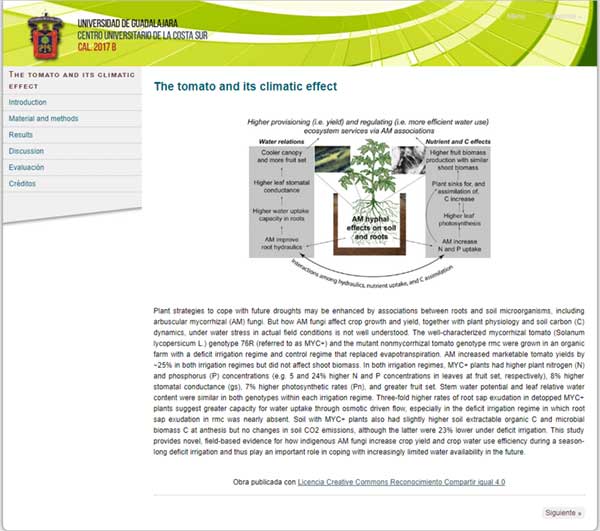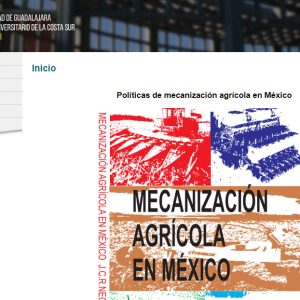Descripción
Plant strategies to cope with future droughts may be enhanced by associations between roots and soil microorganisms, including arbuscular mycorrhizal (AM) fungi. But how AM fungi affect crop growth and yield, together with plant physiology and soil carbon (C) dynamics, under water stress in actual field conditions is not well understood. The well-characterized mycorrhizal tomato (Solanum lycopersicum L.) genotype 76R (referred to as MYC+) and the mutant nonmycorrhizal tomato genotype rmc were grown in an organic farm with a deficit irrigation regime and control regime that replaced evapotranspiration. AM increased marketable tomato yields by ~25% in both irrigation regimes but did not affect shoot biomass. In both irrigation regimes, MYC+ plants had higher plant nitrogen (N) and phosphorus (P) concentrations (e.g. 5 and 24% higher N and P concentrations in leaves at fruit set, respectively), 8% higher stomatal conductance (gs), 7% higher photosynthetic rates (Pn), and greater fruit set. Stem water potential and leaf relative water content were similar in both genotypes within each irrigation regime. Three-fold higher rates of root sap exudation in detopped MYC+ plants suggest greater capacity for water uptake through osmotic driven flow, especially in the deficit irrigation regime in which root sap exudation in rmc was nearly absent. Soil with MYC+ plants also had slightly higher soil extractable organic C and microbial biomass C at anthesis but no changes in soil CO2 emissions, although the latter were 23% lower under deficit irrigation. This study provides novel, field-based evidence for how indigenous AM fungi increase crop yield and crop water use efficiency during a season-long deficit irrigation and thus play an important role in coping with increasingly limited water availability in the future.




